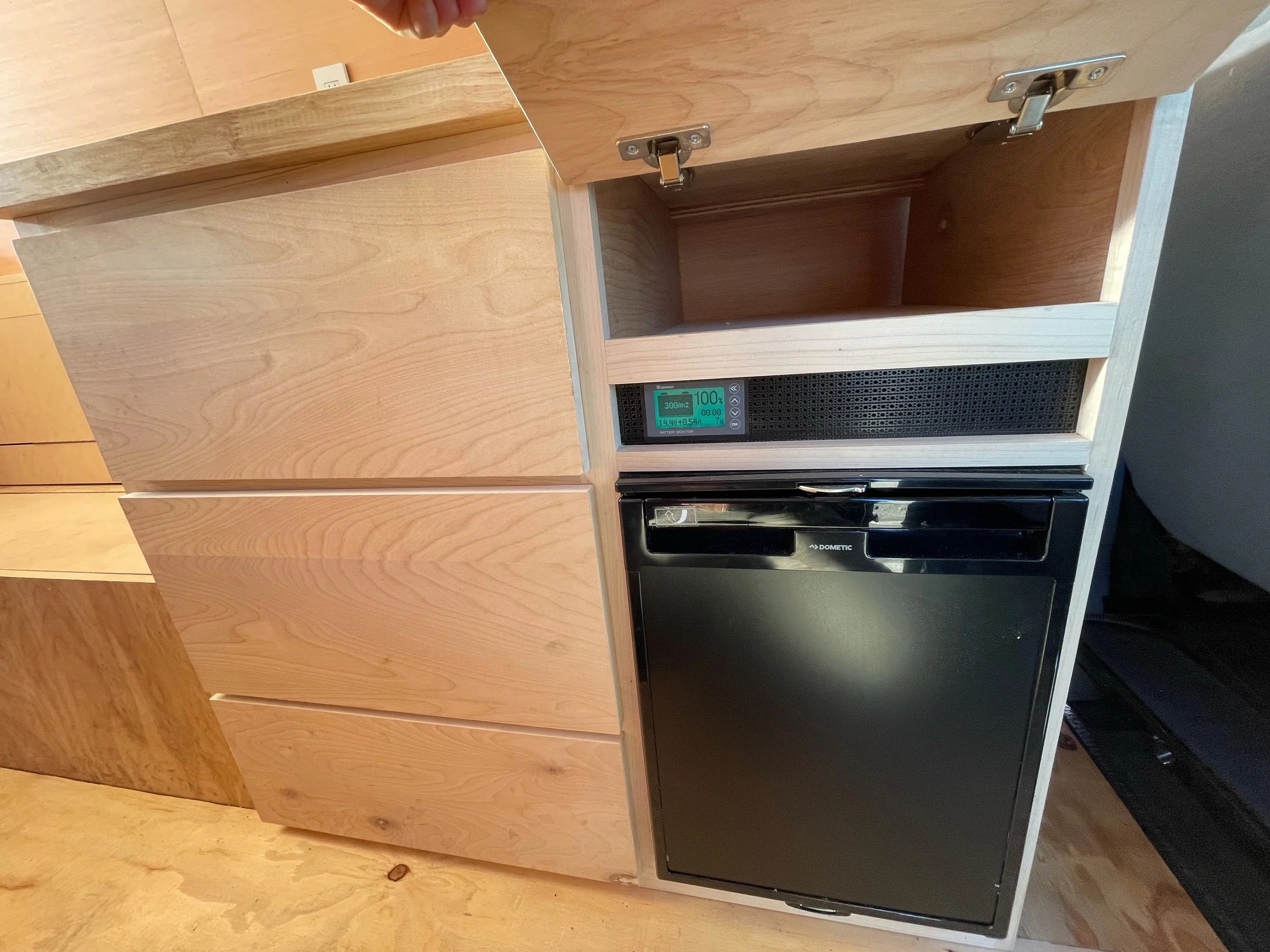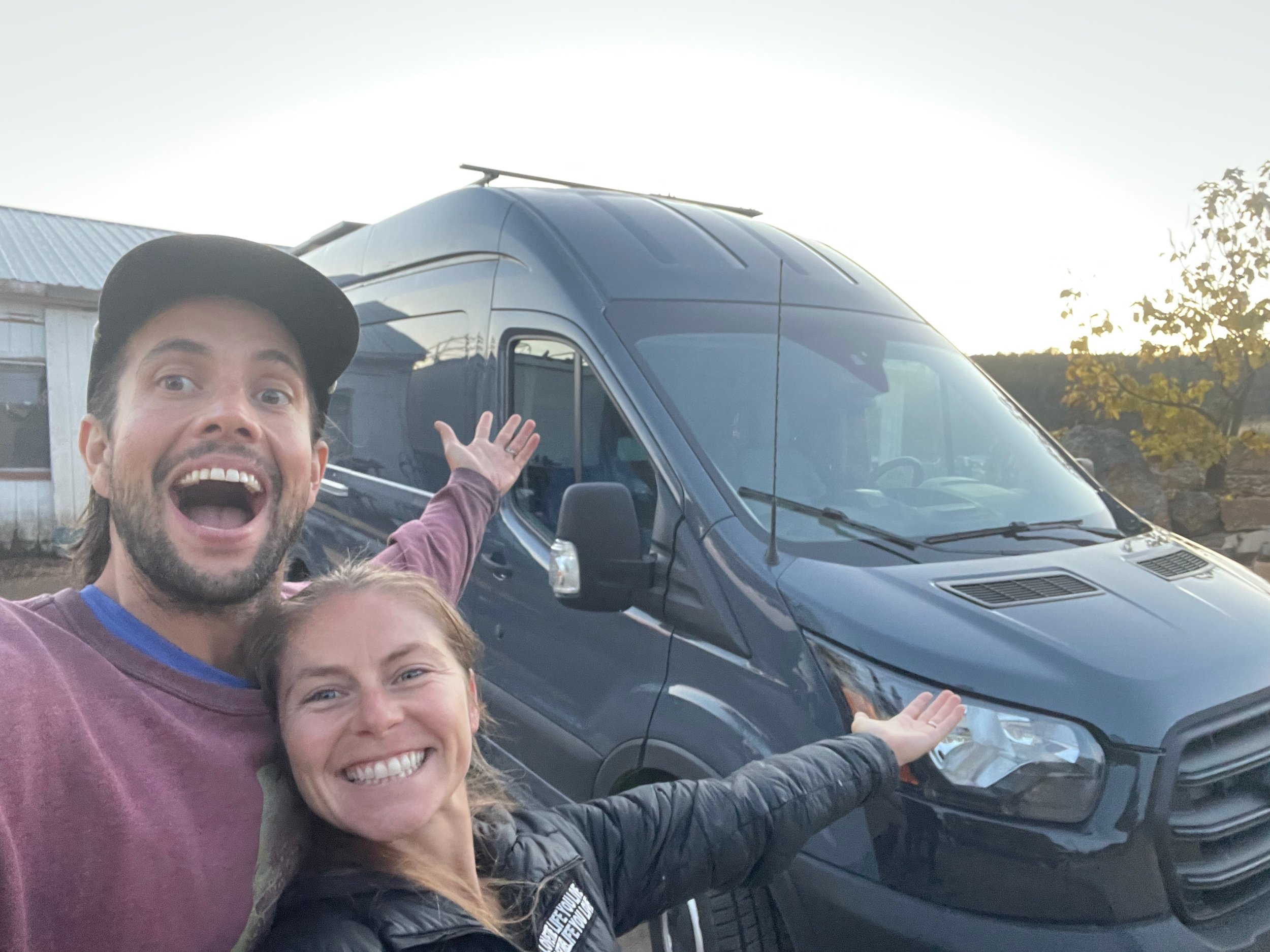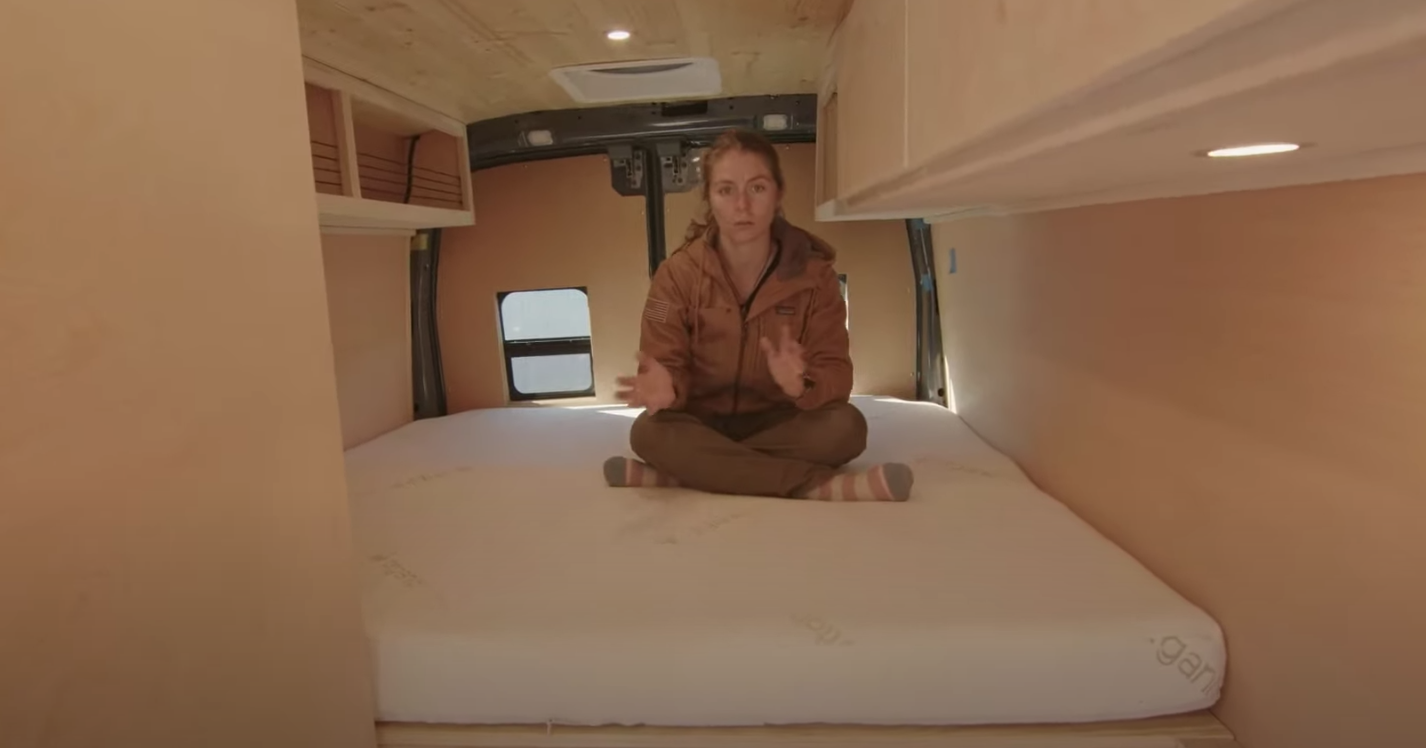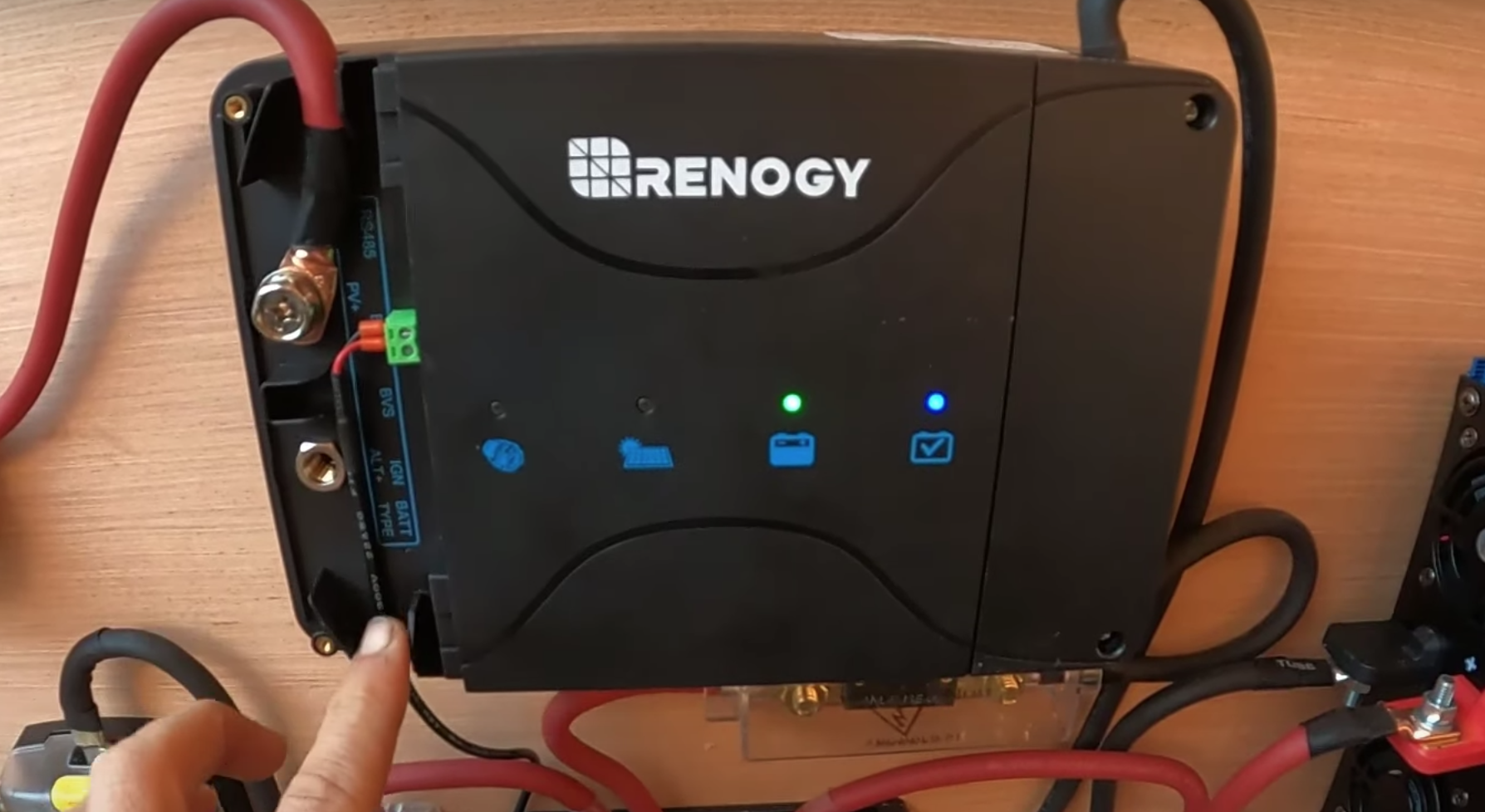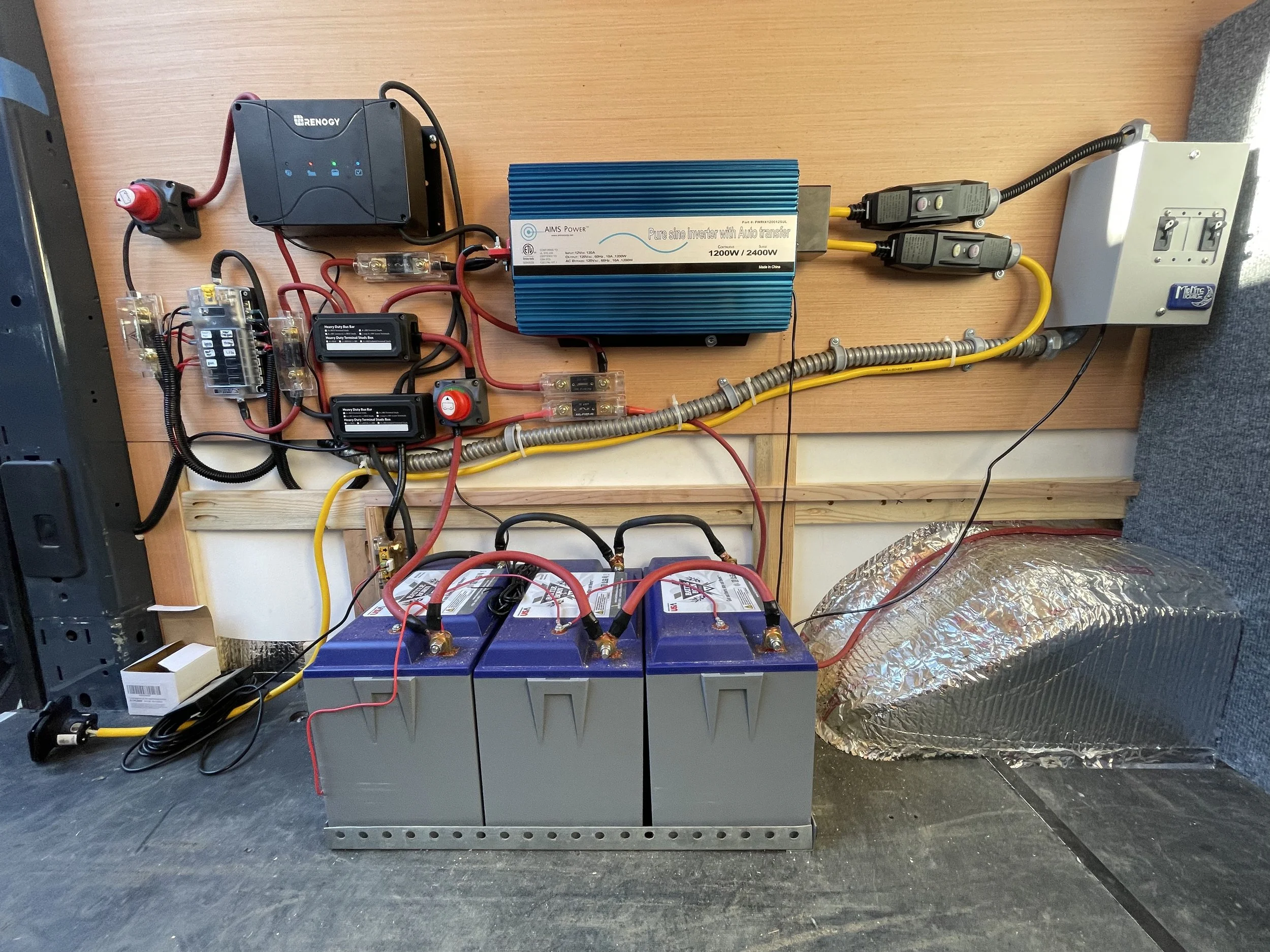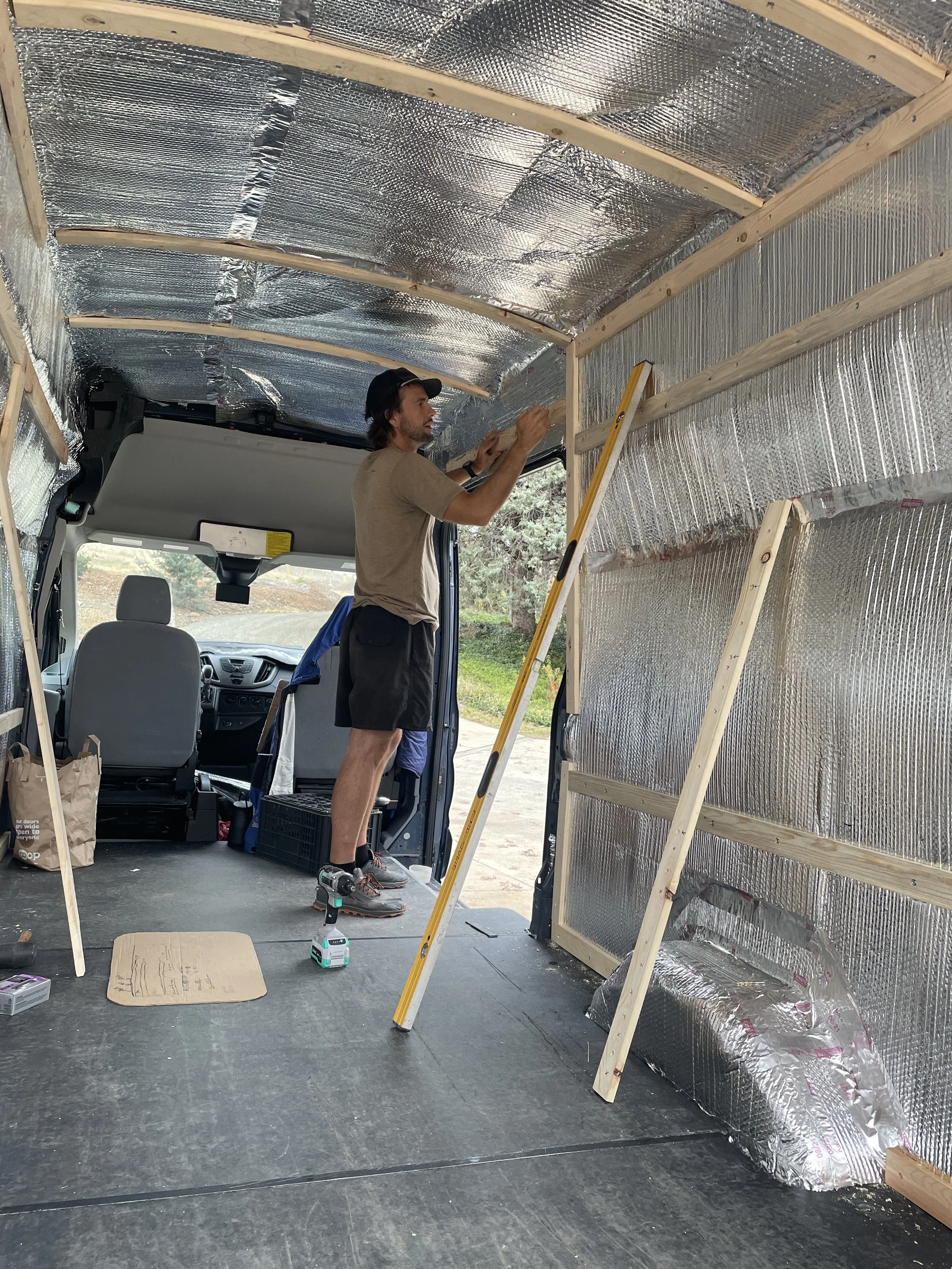Today we are working on Upper Cabinets in a Ford Transit van conversion. This wasn’t the easiest job to get our heads around. The Ford has much more curves and contours than a Sprinter or a Promaster. The main difficulty is the downward curve of the roof after the first roof crossbeam. We knew there was some problem solving ahead but we started this cabinet project like we tackle all upper cabinet projects in van conversion is to start with the layout first.
The first step in this project is to draw and measure your layout. In this step, you will take all your measurements and draw out your face frame layout. We like to draw the layout first because then we can calculate all our cuts for our face frames. The next step is calculating your cut list. Getting all your cut measurements on paper makes for a great reference when you are ripping and cutting all your boards to length. You will first rip all your pieces to width on the table saw, plane then cut all your pieces to length on a chop saw.
Once you have cut all your (Stiles are the vertical pieces of your face frames and rails are the horizontal pieces of your face frames.) It’s now time to assemble your frames. Remember all your stiles will go long and your rails will sandwich in-between your stiles. You will assemble everything with a kreg pocket hole jig. We also highly recommend the proper pocket hole screws for this job as well. You will kreg all your rails on the top and bottom. If you can fit two pocket holes on each side that is ideal but one is ok. Also use wood glue as well as the screws.
Now that you have your face frames built its now time to hang them in the van. We used small L-Brackets on every roof stud so we had 5 L-Brackets. This is just to hold the frames in place so we can scribe our sides and cabinet dividers. We made a kicker with a clamp and some scrap wood to hold the frames in place at the proper distance on each side. This allowed us to get in with our cardboard and start working on templates. We always start with cardboard templates before moving on to templates on harder pieces of wood like masonite or ram board, really any scrap thin wood we have. Once the templates are perfect we then transfer them onto our hardwood. We cut these out with a jig saw and use the circular sander to clean up all the edges.
It’s now time to install all your dividers and end caps. We use a brad nail gun and wood glue and attach all dividers to the face frames. We nail the frames into the dividers vertically down each stile. We also nail in a small nailer on the bottom of each section so we can connect the bottom of the cabinet to the face frames. We now cut the piece for the bottom. We cut a piece that was about 3 inches over so we could scribe our bottom piece out. We scribed the back first with our handy pencil and washer tip. Once the back was perfect we then scribed the front to the inside of the face frame. This took some time and some shoulder strength but we got it done. Once it was matched perfectly we nailed it into the bottom of each divider as well as the nailer that we added to the back of the face frame. For added support, we ran a quarter round along the bottom back edge of the cabinet and nailed that into the van framing as well as the bottom of the cabinet.
To attach it all to the wall very securely we cut headers for each cabinet compartment and used L-Brackets to attach the header to each divider. We also nailed the headers to the dividers at a diagonal angle with the nails. We attached the header with a positive connection to the van framing with 1(1/4)” “Quick Screws”. This added so much more stability to the cabinets.
The next step is to cut the doors. We bought a 3/4” sheet of birch plywood at the hardwood shop and then spent a lot of time laying out our design to match our grain the best we could. We used the table saw and the miter saw to cut all our door panels out. Next, we tapped all the edges of our doors with veneer wood banding. This really cleans up your doors and gets rid of the plywood edging. Now it’s time for hinges you can use any hinge you want here it does make life easier to install the hinges on the doors now, instead of in the van. Once all your hinges are on it’s time to hang your doors on and match the grain.
In the end, you should have a very professional and clean upper cabinet in your van conversion. Give yourself a pat on the back because you did it!
..::Parts & Tools We Used::..
Litheli Impact Driver - https://litheli.com/products/litheli-20v-cordless-1-4-hex-impact-driver-2-0ah-battery-charger?aff=4
Litheli Drill Driver - https://litheli.com/products/20v-cordless-3-8-drill-driver?aff=4
Liquid Nail - https://amzn.to/3pCUwwS
Table Saw - https://amzn.to/3pxbUTL
Battery Powered Brad Nailer - https://amzn.to/3GnrLuZ
Chop Saw - https://amzn.to/31fOWZ3
T- Square - https://amzn.to/2xnD7hg
Measuring Tape - https://amzn.to/2xoT2eY
Kreg Jig - https://amzn.to/3xB0qSN
Kreg Jig Screws - https://amzn.to/3zFUpHI
Clamps - https://amzn.to/3mYm8M5
Jig Saw - https://amzn.to/3tK0jDH
Circular Sander - https://amzn.to/3aYqFLK
Sandpaper - https://amzn.to/3tKzGP0
Router + Bits - https://amzn.to/3HCDvf8
Wood Banding for Door Fronts - https://amzn.to/3mUScAC









